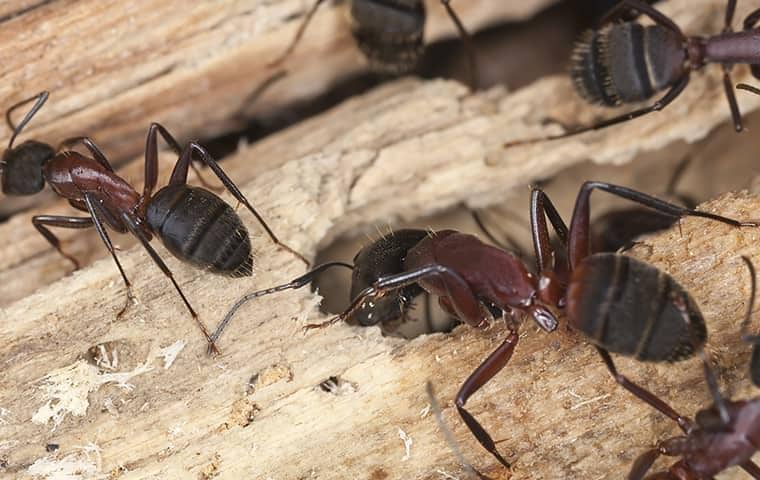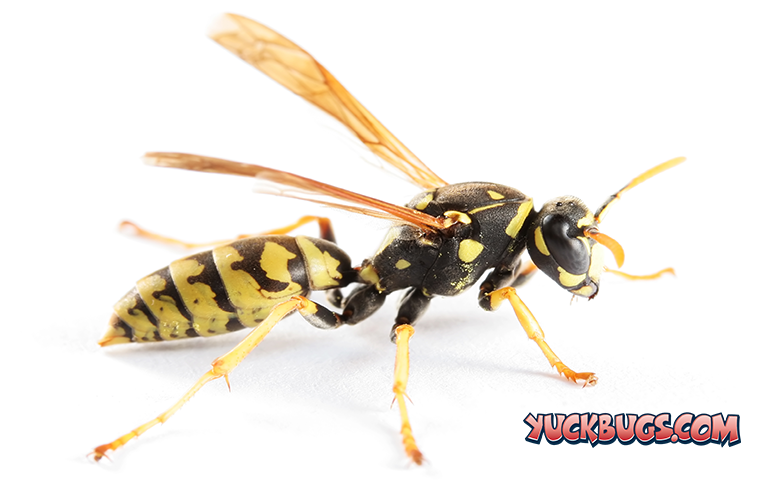Comparing wood destroying insects & signs of an infestation
There are few investments in life that are as large as the investment we make in buying a home, and protecting that investment can be tricky, especially when trying to protect it from wood-damaging pests. Today, we're going to bring into focus two small insects that can be a big problem when they invade. Here's what you need to know most.
If you're not already aware, carpenter ants and carpenter bees damage the wood of a home, and that damage can lead to many issues. Carpenter ants target soft, rotting wood and chew tunnels and galleries. Once established, they can chew into sound wood and structural timbers, which can eventually cause floors to sink down, walls to bulge out, and ceilings to sag. Carpenter bees bore circular tunnels into wood. While each individual bee doesn't bore a very long tunnel, the accumulation of damage over time can be significant because female carpenter bees prefer to lengthen existing tunnels rather than start new tunnels.

Detection
Damage from these two wood-destroying pests isn't immediate. It takes time. Detection is a vital component in protecting your investment.
Frass
This is a fine sawdust that is pushed out of tunnels by carpenter bees and carpenter ants. It will be found on the ground, on floors, stuck to walls, and even stuck to ceilings. Frass has the appearance of pencil shavings.
Entry or Exit Holes
When you find frass, you should also be able to see holes created by one of these insects. Carpenter bee holes are the most noticeable because they are half an inch in diameter. Carpenter ants holes are much smaller. You're more likely to see a crevice, crack, or gap with frass coming out of it if you have a carpenter ant infestation.
Carpenter Ants
A carpenter ant is a large ant that may be black or black and dark red. It is the largest ant that will get into your home. Worker ants can be as large as ½ an inch long, and winged swarmers can be 1 inch in length. If you see one of these ants walking around in your kitchen, it is important to take notice and take action to determine whether or not there is a nest in your home.
Carpenter Bees
If you see a carpenter bee buzzing around near your Tennessee home, you may mistake it for a bumble bee. These two bees have many common visual characteristics. They're both large bees with black and yellow hairs, which gives them a fat, fuzzy appearance. But carpenter bees have an abdomen that is black and mostly free of hair.
Carpenter Ant Damage
When carpenter ants create tunnels and galleries, they clean and polish the wood, making their tunnels much smoother than the tunnels created by subterranean termites. Usually, this damage will be inside wall voids and hidden locations. Look in locations on your property where wood touches the soil or where moisture is creating wood rot, like at the base of fence posts.
Carpenter Bee Damage
When carpenter bees tunnel, they sometimes breach tunnel walls and create a hole to the outside. They may create several of these holes running along the grain of the wood they are boring into. This damage will look like dashes and dots and could appear on your roofline, eaves, deck railings, untreated wood supports, and more.
Carpenter Ant and Carpenter Bee Elimination
If you see signs of carpenter ants or carpenter bees, it is important to seek the assistance of a professional. Certified pest control technicians don't just eliminate pest problems, they are also trained to monitor for pest activity. When it comes to wood-destroying pests, the last thing any homeowner needs is to spend lots of money and time only to have their infestation continue.
Proactive Control
The best way to deal with pest problems is to stop those pests "before" they can do harm. At All-American Pest Control, our Perimeter PLUS Program works to detect and target carpenter bees and carpenter ants, along with over 47 other pests. Call today to get your perimeter barrier in place and to learn more about our residential and commercial pest control services in Tennessee.
We're Ready To Help
Call Our Office or Complete the Form To Get Your Customized Quote
 1270 Reviews
1270 Reviews








